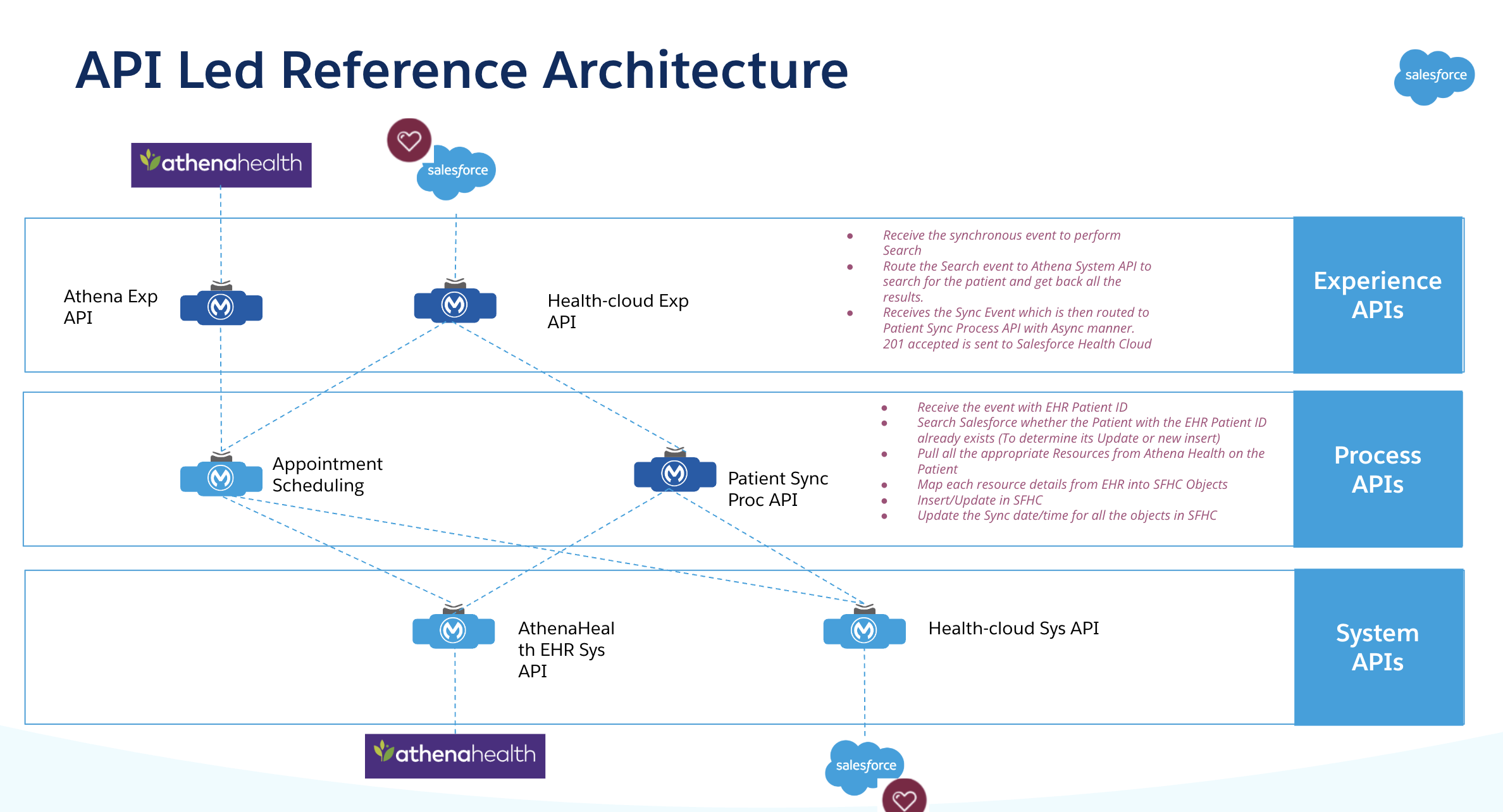Athena Health Integration
Overview
MuleSoft provides a powerful integration platform for healthcare organizations using Athena Health, enabling seamless data exchange and improved patient care coordination.

Key Benefits
Scalable Integration Platform
- Accelerates data integration for patient contact center
- Supports future use cases and expansion
- Provides enterprise-grade scalability and reliability
Pre-built Accelerators
- Contact Center Scheduling integration
- Patient data synchronization
- Pre-built APIs with pagination support
- Reduced development time and effort
FHIR Integration
- Seamless integration with Salesforce Health Cloud
- Standardized FHIR mappings
- Extensible to multiple EHR systems
- Compliant with healthcare data standards
API-Led Architecture
- Synchronous integration model
- API-led design approach
- Reusable components and patterns
- Simplified maintenance and updates
Patient 360 Accelerator
- Accelerates patient data synchronization
- Maps to Salesforce Health Cloud objects
- Reduces development time
- Ensures data consistency
Integration Components
System APIs
- Core athenahealth system connectivity
- Data transformation and mapping
- Security and authentication
- Error handling and logging
Process APIs
- Business logic orchestration
- Data enrichment and validation
- Workflow automation
- Integration with other systems
Experience APIs
- Patient-facing interfaces
- Provider portals
- Administrative dashboards
- Custom application integration
Best Practices
-
Data Security
- Implement HIPAA compliance
- Encrypt sensitive data
- Maintain audit trails
- Regular security assessments
-
Performance Optimization
- Implement caching strategies
- Optimize API calls
- Monitor system performance
- Scale resources as needed
-
Error Handling
- Implement comprehensive logging
- Set up alerting mechanisms
- Define retry policies
- Document error resolution procedures
-
Maintenance
- Regular system updates
- Performance monitoring
- Capacity planning
- Documentation updates